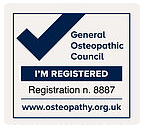Introduction
The biological changes that take place in the female body as it prepares for birth have a significant impact on the musculoskeletal system.
Increased hormone levels (progesterone and relaxin) increase ligament laxity especially around the pelvis as it becomes ready for labour.
Increased weight at the front as the ‘bump’ grows increases the load and stress on the back muscles and the anterior core stability muscles. So not only do the back and postural muscles have to cope with the extra load and a changing centre of gravity but they also have to do so with little help from the ligaments too.
Post labour and early years
During labour the musculature of the abdomen, pelvis and hips are put under extreme strain and the resulting stress on the ligaments involved does not necessarily resolve immediately after birth. After a Caesarean women are advised not to lift for 6 weeks.
They also have to deal with breast feeding for sometimes lengthy periods in uncomfortable positions, lifting a ‘bundle of joy’ that grows a fifth in weight every month and manoeuvre a buggy around town, busses, shops etc which can be really heavy. Our buggy weighed in at 10kg without child!
Is it any wonder that women have bad backs.
Often this is lower back pain, into the hips, gluteal area and sciatica with pain into the knees, hamstrings and sometimes calf.
Causes of pain
The immediate symptoms can often be related to muscle fatigue and strains. The muscles have spent most of the pregnancy on a stretch or over working one way or another. They continue without rest-bite carrying and lifting all through the toddler years too. Eventually they can give up and go into spasm or give dull aching pain. Very rarely is there disc involvement but that is not to say it is never involved.
Whilst Osteopaths treats the immediate symptoms we always look for the underlying musculoskeletal causes too.
Here is an example.
You may recognise some or all of the symptoms described here. Mums with back problems have a few, most or all of these symptoms
Patient A
A 37yr old mother of two, a 6 year old and 2 year old. Both were vaginal births with no complications. The patient had lower back pain on the left side with sciatica- pain down through the right gluteal area into the hamstring (back of the leg). The patient had first experienced this during pregnancy but put up with it through the pregnancy and it eventually settled down with occasional flare ups. One year after the birth of her second child the pain had returned as well as occasional pain on the medial aspect of her right knee (inner side).
Evaluation
The patient’s left hip was slightly raised on the left and tilted forward leading to a slightly longer left leg. The back muscles on the left were tighter as were the patient’s gluteals, the right hamstring was tighter than the left. Her right leg was slight rotated externally and the start of a bunion was forming on her right foot.
Clinical tests suggested no disc involvement.
Treatment
With the left hip slightly raised the lumbar spine becomes compressed and the muscles become shortened. This over time can cause pain as the facets move less freely and the muscles become tighter restricting blood flow. So initially treatment focused on improving mobility and increasing blood flow to this area and reducing pain through tissue massage and articulations.
However the raised hip needed to be addressed too. The patient had tight hip flexors (ilio psoas) and these were relaxed and the tilt forward was corrected over time through manipulation and retraining the muscles through exercises.
The sciatic radiations were addressed by improving circulation to the overworked and stretched right piriformis as well as reducing the tension itself by addressing the asymmetry in the pelvis.
As the internal rotation was reduced so was the strain on the medial aspect of the right knee. In addition strengthening exercises were given to improve the quads
Exercises for Mums with back pain
Exercises and therapeutic stretches are really integral to addressing the pain and helping prevention. Leaving it solely to the osteopath’s 30 minute or 45 minute session once a week is not enough. Think of it this way. The treatment will reset body into the right position and optimise it for the healing process but the patient has to do their part too. The biggest effect will be in what Mums can do between treatments.
Short term
1) Knee hugs to maintain the mobility in the lower back
2) Tsp rotation to maintain mobility in the upper spine
3) Hip flexor stretches to prevent those muscles pulling the pelvis forward
4) Hip extensor exercise to keep the pelvis symmetrical and engaging muscles such as gluteals and hamstrings
5) One leg knee bends to improve strength to right quads and give extra stability to knee
Longer term
Once out of pain and there is improved mobility then the best thing is to improve core stability. As an Osteopath I work closely with a local Pilates instructor to find the best class either mat or a one to one class that would focus on the areas of core stability the patient needs to work on.
And importantly a class that will be flexible enough to work around a Mum’s busy and demanding life.
About Hugo Firth BOst
He is a qualified Osteopath at the Osteopathy Partnership (www.osteopathypartnership.com) working in Kingston , Surbiton and Soho.Registered with GOsC and the Institute of Osteopathy.








